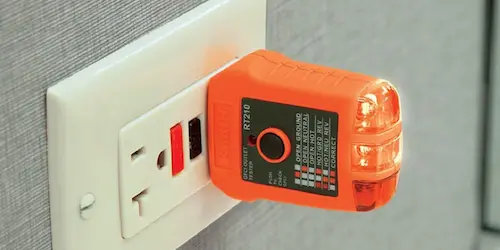20-amp GFCI outlets vs. 15-amp GFCI outlets
If you are looking to install that new HVAC unit, new LED light fixture, or replace all of your outlets with GFCI’s, then you will need to understand the importance of amperage. While we suggest that you call an electrician for any of your electrical wiring needs, it is nice to gain an understanding for future reference.

Recommended Products
The amperage of the outlet must never exceed the amperage of the circuit
According to National Electrical Code, only a 15-amp or 20-amp electrical receptacle can be installed to a 20-amp circuit. A 15-amp receptacle may also be installed on a 15-amp circuit. However, a 20-amp GFCI outlet may not be installed to a 15-amp circuit.
If you are looking to install a 15-amp outlet, make sure:
- The electrical receptacle is UL Listed
- The outlet features feedthrough wiring so it can be installed to a 20-amp circuit
20-amp circuits are designed for a heavier load of electrical current than 15-amp circuit breakers. For commercial and industrial power distribution, the circuit breakers will have a higher amperage.
What is the maximum number of 15-amp or 20-amp GFCI outlets allowed on a 20-amp/120V circuit in a commercial space?
For commercial spaces, the NEC requires that each outlet be measured at 180 volts per amp, or VA. If you want to calculate how many outlets can be installed on a 120 volt and 20-amp circuit, its simple. Lucky for you we took the math out of the equation and made this chart. You’re welcome!
Circuit (volts) | 120 | 120 | 240 | 240 |
Circuit (amps) | 15 | 20 | 15 | 20 |
Circuit (VA) | 1,800 | 2,400 | 3,600 | 4,800 |
Outlet (VA) | 1,800/180 | 2,400/180 | 3,600/180 | 4,800/180 |
Total Outlets Allowed | 10 | 13 | 20 | 26 |
Never overload your circuits
The general rule of thumb is to never exceed a max load of more than 80%. Lighting, for example is normally run on a 15-amp circuit. This helps allow for growth and any changes in the load size. For this reason, lights and electrical outlets should be on separate circuits to allow maximum loading of lighting circuits, and maximum capacity for outlets.
According to the NEC, although there is no limit on the number of lighting and/or receptacle outlets on dwelling general-purpose branch circuits, it does require a minimum number of circuits to be installed for general-purpose receptacles and lighting outlets [210.11(A)]. In addition, the receptacle and lighting loads must be evenly distributed among the required circuits.
Recommended Reading
Electrical trips can occur due to worn out insulation, conductive dust or debris, water, or electrical wiring deterioration. Discover more ways to troubleshoot your GFCI if it starts to trip.
Routine testing can ensure your GFCI outlets work properly as well as let you know when it's time to replace them.
See the steps to install a new GFCI receptacle! We recommend contacting an electrician to install your GFCI, but this guide can help you see what steps they need to take to install it.
Recommended Products
Receive special deals and more, right to your inbox
Receive special deals and more, right to your inbox








